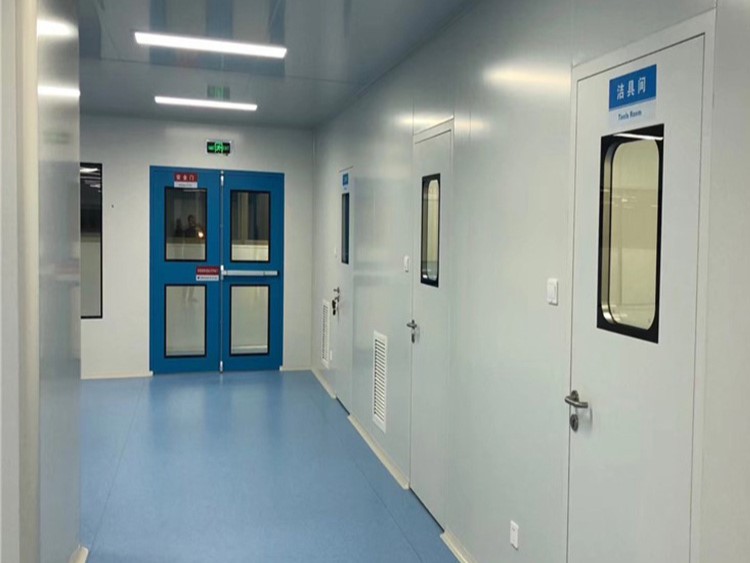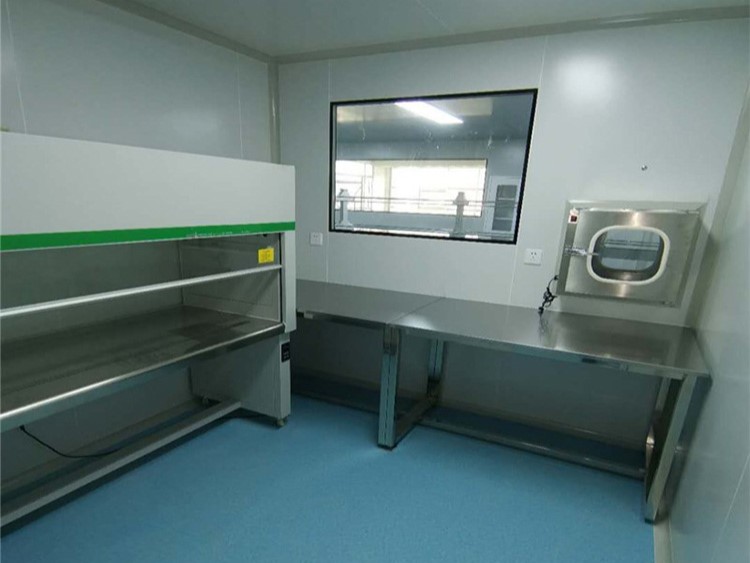

1. Purpose: This procedure aims to provide a standardized procedure for aseptic operations and protection of sterile rooms.
2. Scope of application: biological testing laboratory
3. Responsible Person: QC Supervisor Tester
4.Definition: None
5. Safety precautions
Strictly perform aseptic operations to prevent microbial contamination; operators should turn off UV lamp before entering sterile room.
6.Procedures
6.1. Sterile room should be equipped with a sterile operation room and a buffer room. The cleanliness of the sterile operation room should reach class 10000. The indoor temperature should be maintained at 20-24°C and the humidity should be maintained at 45-60%. The cleanliness of the clean bench should reach class 100.
6.2. Sterile room should be kept clean, and it is strictly forbidden to pile up debris to prevent contamination.
6.3. Strictly prevent contamination of all sterilization equipment and culture media. Those that are contaminated should stop using them.
6.4. Sterile room should be equipped with working concentration disinfectants, such as 5% cresol solution, 70% alcohol, 0.1% chlormethionine solution, etc.
6.5. Sterile room should be regularly sterilized and cleaned with appropriate disinfectant to ensure that the cleanliness of the sterile room meets the requirements.
6.6. All instruments, instruments, dishes and other items that need to be brought into sterile room should be tightly wrapped and sterilized by appropriate methods.
6.7. Before entering sterile room, staff must wash their hands with soap or disinfectant, and then change into special work clothes, shoes, hats, masks and gloves in buffer room (or wipe their hands again with 70% ethanol) before entering sterile room. Perform operations in bacterial chamber.
6.8. Before using sterile room, the ultraviolet lamp in sterile room must be turned on for irradiation and sterilization for more than 30 minutes, and the clean bench must be turned on for air blowing at the same time. After the operation is completed, sterile room should be cleaned in time and then sterilized by ultraviolet light for 20 minutes.
6.9. Before inspection, the outer packaging of the test sample should be kept intact and must not be opened to prevent contamination. Before inspection, use 70% alcohol cotton balls to disinfect the outer surface.
6.10. During each operation, a negative control should be done to check the reliability of aseptic operation.
6.11. When absorbing bacterial liquid, you must use a suction ball to absorb it. Do not touch the straw directly with your mouth.
6.12. The inoculation needle must be sterilized by flame before and after each use. After cooling, the culture can be inoculated.
6.13. The straws, test tubes, petri dishes and other utensils containing bacterial liquid should be soaked in a sterilization bucket containing 5% Lysol solution for disinfection, and taken out and rinsed after 24 hours.
6.14. If there is bacterial liquid spilled on table or floor, you should immediately pour 5% carbolic acid solution or 3% Lysol on the contaminated area for at least 30 minutes before treating it. When work clothes and hats are contaminated with bacterial fluid, they should be taken off immediately and washed after high-pressure steam sterilization.
6.15. All items containing live bacteria must be disinfected before being rinsed under the tap. It is strictly prohibited to pollute the sewer.
6.16. The number of colonies in sterile room should be checked monthly. With the clean bench open, take a number of sterile petri dishes with an inner diameter of 90 mm, and aseptically inject about 15 ml of nutrient agar culture medium that has been melted and cooled to about 45°C. After solidification, place it upside down at 30 to 35 Incubate for 48 hours in a ℃ incubator. After proving sterility, take 3 to 5 plates and place them on the left, middle and right of the working position. After opening the cover and exposing them for 30 minutes, place them upside down in a 30 to 35°C incubator for 48 hours and take them out. examine. The average number of miscellaneous bacteria on the plate in a class 100 clean area shall not exceed 1 colony, and the average number in a class 10000 clean room shall not exceed 3 colonies. If the limit is exceeded, the sterile room should be thoroughly disinfected until repeated inspections meet the requirements.
7. Refer to the chapter (Sterility Inspection Method) in "Drug Hygienic Inspection Methods" and "China Standard Operating Practices for Drug Inspection".
8. Distribution Department: Quality Management Department
Clean room technical guidance:
After obtaining a sterile environment and sterile materials, we must maintain a sterile state in order to study a specific known microorganism or utilize their functions. Otherwise, various microorganisms from outside can easily mix in. The phenomenon of the mixing of irrelevant microorganisms from outside is called contaminating bacteria in microbiology. Preventing contamination is a critical technique in microbiological work. Complete sterilization on the one hand and prevention of contamination on the other are two aspects of aseptic technique. In addition, we must prevent the microorganisms under study, especially pathogenic microorganisms or genetically engineered microorganisms that do not exist in nature, from escaping from our experimental containers into external environment. For these purposes, in microbiology, there are many measures.
Sterile room is usually a small room specially set up in microbiology laboratory. Can be built with sheets and glass. The area should not be too large, about 4-5 square meters, and the height should be about 2.5 meters. A buffer room should be set up outside sterile room. The door of the buffer room and the door of the sterile room should not face the same direction to prevent airflow from bringing in miscellaneous bacteria. Both sterile room and buffer room must be airtight. Indoor ventilation equipment must have air filtration devices. The floor and walls of the sterile room must be smooth, difficult to harbor dirt and easy to clean. The work surface should be level. Both sterile room and buffer room are equipped with ultraviolet lights. The ultraviolet lights in sterile room are 1 meter away from work surface. Staff entering sterile room should wear sterilized clothing and hats.
Currently, sterile rooms mostly exist in microbiology factories, while general laboratories use clean bench. The main function of the clean bench is to use laminar air flow device to remove various tiny dusts including microorganisms on work surface. The electric device allows air to pass through hepa filter and then enter work surface, so that the work surface is always kept under the control of flowing sterile air. Moreover, there is a high-speed air curtain on the side close to the outside to prevent external bacterial air from entering.
In places with difficult conditions, wooden sterile boxes can also be used instead of clean bench. The sterile box has a simple structure and is easy to move. There are two holes on the front of the box, which are blocked by push-pull doors when not in operation. You can extend your arms in during operation. The upper part of the front is equipped with glass to facilitate internal operation. There is an ultraviolet lamp inside box, and utensils and bacteria can be put in through small door on the side.
Aseptic operating techniques currently not only play a pivotal role in microbiological research and applications, but are also widely used in many biotechnologies. For example, transgenic technology, monoclonal antibody technology, etc.
Post time: Mar-06-2024

